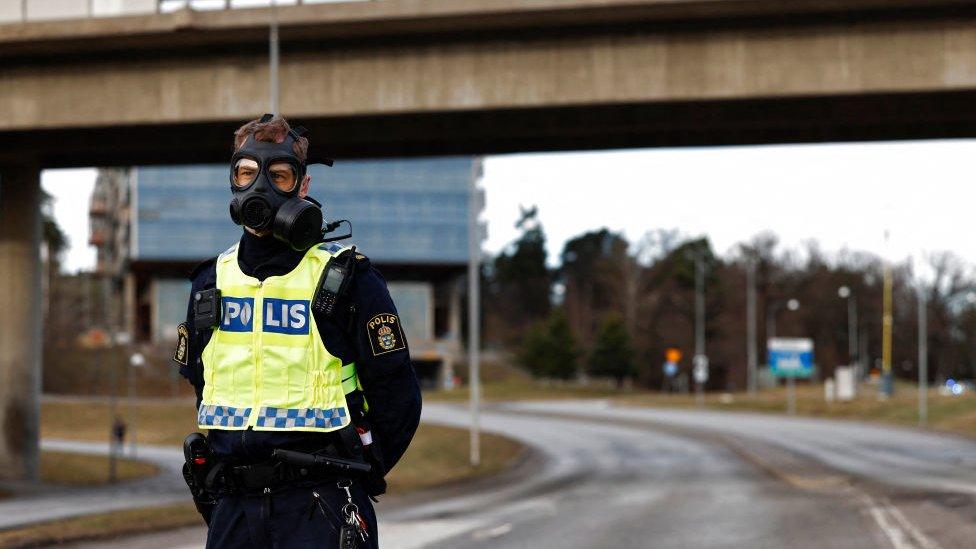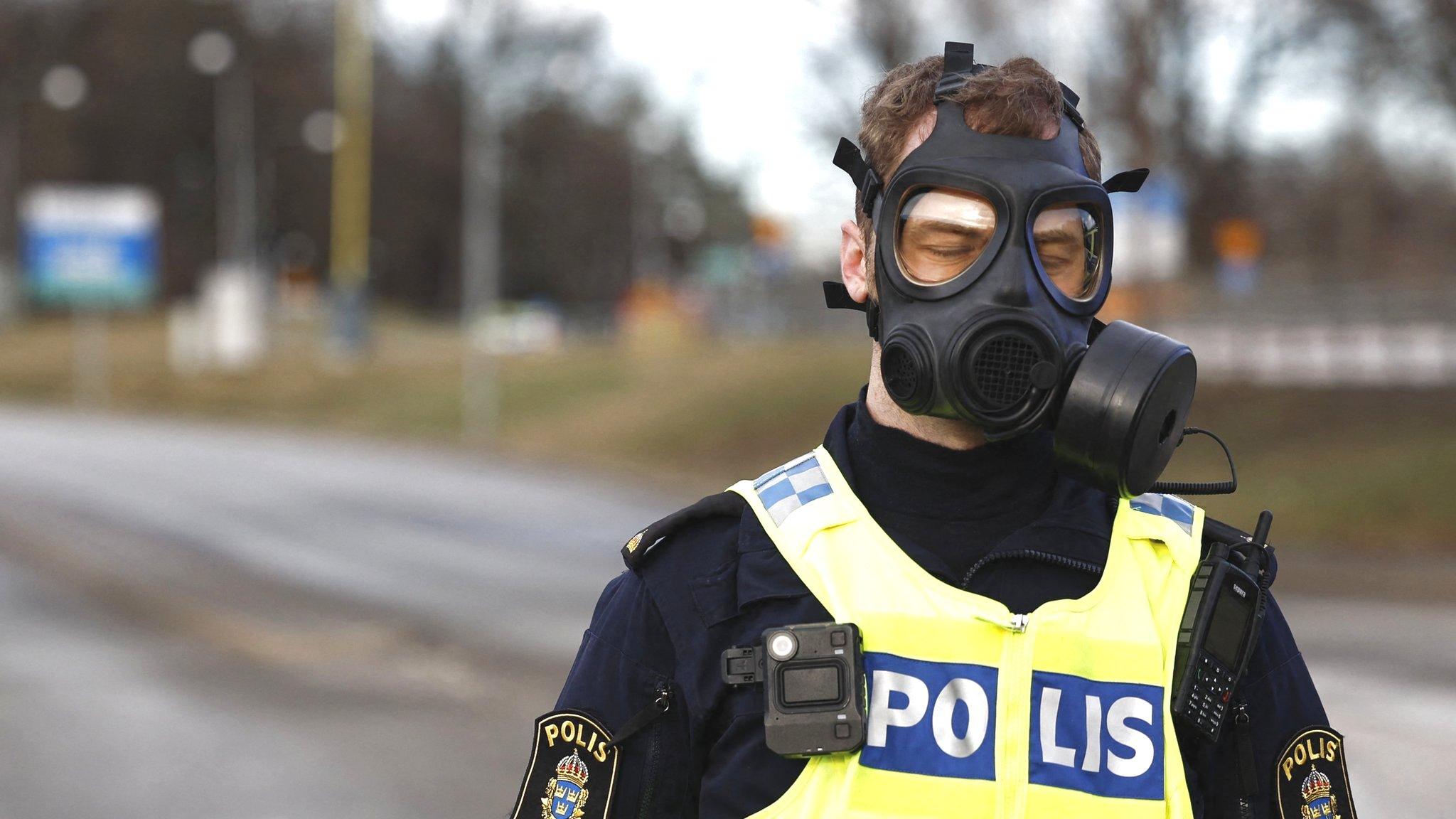Phosgene was detected at Sweden security service HQ, report suggests
- Published

Around 500 people were evacuated from Sweden's security HQ and eight sent to hospital last Friday
Traces of the World War One poison gas phosgene were detected in an incident at Sweden's security service HQ last Friday, official documents suggest.
The information contradicts an earlier statement from Sapo, the security service, which said no gas was detected inside or outside the building.
Hundreds were evacuated from the building and eight sent to hospital.
Phosgene is used to make plastics and pesticides, and was behind most chemical deaths during World War One.
The report suggesting the presence of the dangerous substance came from Stockholm's County Administrative Board and was seen by Swedish newspaper Svenska Dagbladet.
It said: "Emergency services have recorded the substance phosgene (0.6 ppm) and during the meeting, information emerged that these are decreasing measured values."
The substance was recorded by sensors on the roof of the building, it added.
Emergency services reported that the levels of phosgene decreased until they "reached zero", county official Lena Maria Fritzberg told public broadcaster SVT. "Then there was no longer any danger."
Sapo insists that what it said on Friday still holds - that no gas was detected. Speaking to TT news agency, a spokesperson was unable to explain why this appeared to conflict with the county's report.
Intelligence expert Joakim von Braun told TT he believed the most likely explanation for the gas being recorded was a fault with the sensors.
Mr von Braun said it seemed "preposterous" that anyone would deliberately release phosgene.
"I have a hard time seeing the motives behind it."
It is also possible to create phosgene accidentally when a hot metal makes contact with a chlorinated substance.
This could happen, for example, if metal that had been cleaned with chlorine was welded.
A major emergency operation was launched after reports of a strange smell at the headquarters of Sapo, just outside Stockholm city centre, at 12:30 local time (11:30 GMT) last Friday.
The nearest exit of a nearby motorway was closed and barriers were set up hundreds of metres around the premises. Around 500 workers were evacuated.
Six people were sent to hospital with reported breathing problems - including several police officers - and two others admitted themselves. All have since been discharged.
Images from the scene showed police officers wearing gas masks, and a helicopter circled the area. People in buildings nearby were told to shut their windows.
Schoolchildren were kept indoors, a teacher told broadcaster TV4. People who live in the sealed-off zone were refused access to their homes.
First responders ended their operation and removed barriers at about 16:30.
The incident happened as Sweden was about to overcome what should be its last hurdle to joining the Nato alliance - Hungary's parliament ratified the bid on Monday.
In response, Russia says it will monitor Sweden's next steps and adopt "military-technical and other" measures to protect itself.
- Published23 February 2024
